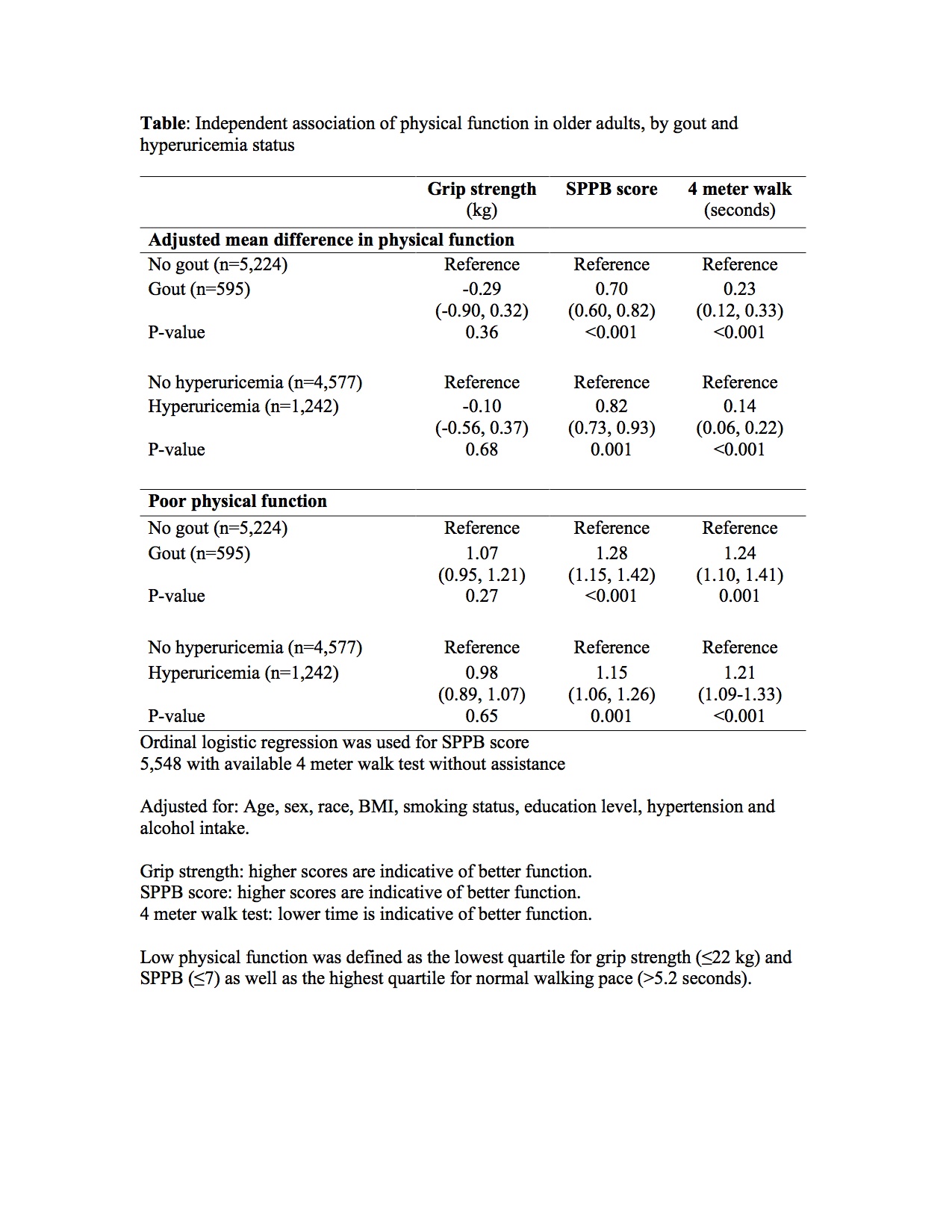Session Information
Session Type: Abstract Submissions (ACR)
Disclosure:
M. McAdams-DeMarco,
None;
B. Burke,
None;
A. Law,
None;
A. Kottgen,
None;
A. N. Baer,
None;
J. Coresh,
None.
« Back to 2014 ACR/ARHP Annual Meeting
ACR Meeting Abstracts - https://acrabstracts.org/abstract/physical-function-hyperuricemia-and-gout-in-older-adults/

